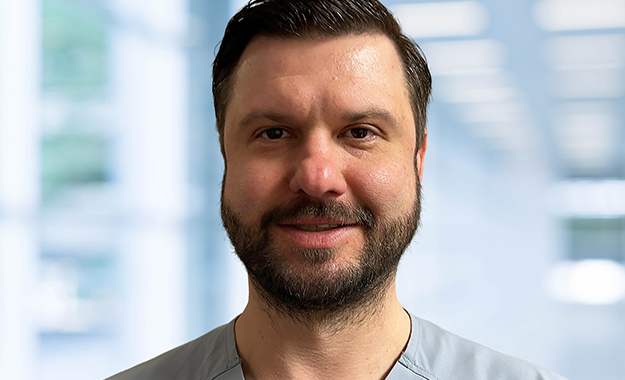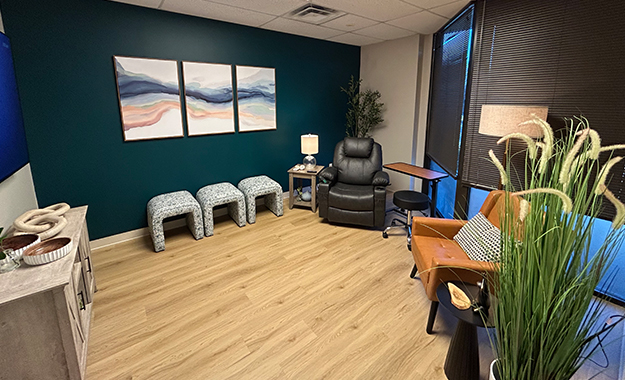Top 10 Breathing Questions Answered By a Respiratory Therapist

In this Q&A, PromptCare’s Andrei Mihai, RRT, answers 10 frequently asked respiratory questions with the clarity and care he brings to every patient interaction.
Breathing challenges can arise suddenly or develop over time, and when they do, respiratory therapists are often the first to offer insight and reassurance. From managing oxygen and non-invasive ventilation to explaining home ventilator care and breathing techniques, RTs play a vital role in helping patients, families, and care teams manage respiratory conditions. In this Q&A, Andrei Mihai, RRT, answers 10 common questions he hears from patients, families, and fellow clinicians.
What does a respiratory therapist (RT) do?
We care for people who have difficulty breathing. We treat patients of all ages, from infants with underdeveloped lungs to adults managing chronic lung conditions. This might mean managing ventilators, administering breathing treatments, monitoring oxygen levels to help patients breathe more comfortably, or teaching patients how to use an inhaler the right way.
When would someone need to see a respiratory therapist?
Usually, people come to us when breathing becomes harder than it should be. That could be something short-term, like pneumonia, or something ongoing, like asthma, COPD, or a neuromuscular condition like ALS. We’re also part of the care team when a patient is on oxygen or recovering from surgery or an illness that requires a hospital stay.
What’s the difference between oxygen and ventilation support?
Oxygen therapy gives your body more oxygen when blood-oxygen levels are low. A ventilator supports you when your lungs can’t move air in and out on their own. Think of oxygen as support for your oxygen levels, while a ventilator helps with the actual work of breathing when the body cannot do it effectively on its own.
How do you help patients diagnosed with COPD?
With COPD, every breath takes more effort. We help by teaching and administering inhaled medications and oxygen if needed. COPD may require non-invasive breathing support. Disease-state education is just as important. We teach breathing techniques and how to recognize early signs of flare-ups to avoid hospital visits and improve daily quality of living.
What are BiPAP and CPAP, and how are they different from a ventilator?
BiPAP and CPAP are both considered non-invasive types of breathing support delivered through a mask. CPAP gives constant air pressure to keep airways open, usually for sleep apnea. BiPAP gives two levels of pressure when you breathe in and out. A mechanical ventilator is more advanced. It can fully or partially take over breathing, and it connects through either a mask or a trach tube. They are designed to provide life-sustaining support, often for patients requiring ventilation 24 hours a day.
How do you help patients with ALS or other neuromuscular conditions?
With conditions like ALS, as the disease progresses, the breathing muscles weaken. We monitor lung strength and introduce therapies like cough-assist devices and non-invasive ventilation. We also work closely with families to make sure everyone feels prepared and supported as things change.
What is a cough-assist device?
It’s a device that helps people who can’t produce a strong enough cough on their own. It pushes air into the lungs, then pulls it back out quickly to mimic a natural cough. This action clears mucus from the airways and helps prevent infections. We teach caregivers how to use it safely at home and adjust the settings to fit each patient’s needs.
What’s the difference between a nebulizer and an inhaler?
Both deliver medication directly to the lungs, but in different ways. A nebulizer turns medicine into a mist you breathe in through a mask or mouthpiece over several minutes. It’s great for kids, people in a flare-up, or those who cannot use an inhaler appropriately. Inhalers are faster and portable, but they require good technique, which we help patients learn and practice.
Can anxiety affect breathing?
Absolutely. Anxiety can cause fast, shallow breathing that feels a lot like something more serious. We help figure out what’s going on and teach breathing exercises to calm the body and improve gas exchange. It’s amazing how much of a difference this can make, especially for people who already have a chronic lung condition.
What’s something most people don’t realize about breathing?
Most people don’t think about breathing until something goes wrong. But it influences energy, mood, stamina, and sleep. Respiratory therapists help protect this basic, essential function so people can live fuller lives.



